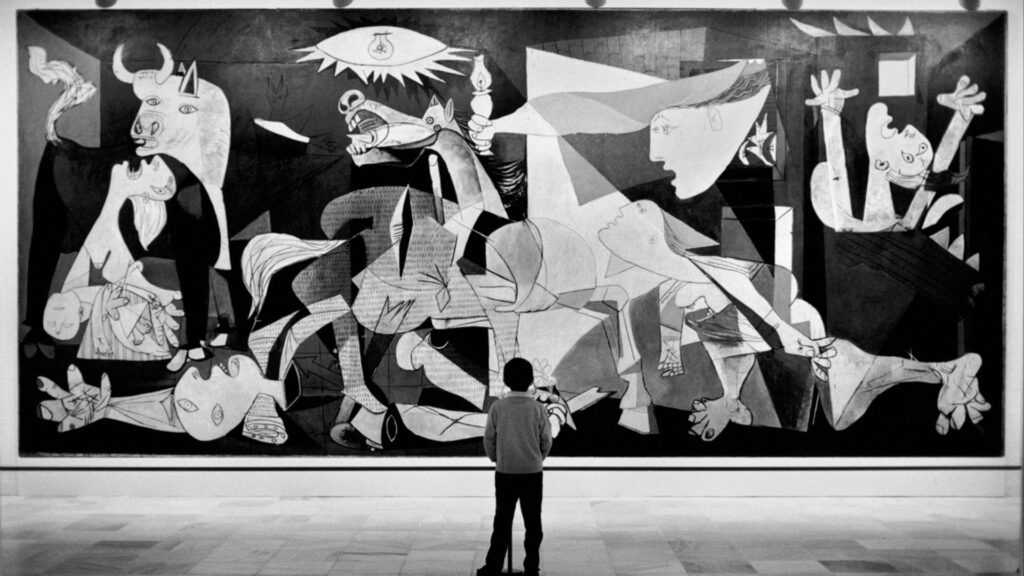Contemporary Expressions of Violence – a few perspectives
In the recent history of the world, one of the main concerns of many public and private bodies regards violence, understood as human aggression, and its impact at both micro and macro levels. This means the scientists research the impact of violence of and upon one individual and its causes (seen as an isolated case) and the impact of and upon large groups of individuals and their causes, which can be extended to a more general context and perhaps are more relevant to the society in general.
All bodies agree that violence and tension in their different forms and degrees can and will affect the fundamentals of any healthy society: education, culture, science, and communication. As new means of communication spread around the world, people are being exposed repeatedly to different expressions of violence being it physically (war, crime, riots, etc) or psychologically (pain, sufferance, death, etc).
GET MORE FROM LEVEL

The need and causes for violence as a general demand (if any) is a complex process, strongly linked to our background and social and economic context. Some researchers show that youths’ racist attitudes are often characterized by “the poverty and limitedness of their cognitive and emotional processes”. A thorough examination of the factors that determine violence in contemporary society must be cross-disciplinary and approach several types of analysis of individual and mass behavior. For instance, only the biologist’s approach to causes of violent behavior at the level of the brain structure cannot offer a complete map of the causality of all forms of violence.

Is contemporary society more violent than other époque?
Violence can be defined in many ways from physical strong force to mental or verbal violence. Violence can be employed by natural phenomena such as earthquakes or other natural disasters or it can be caused by humans. Violence can be individual or collective, legal or illegal, witnessed or induced. To establish if a society is more violent than any other one must describe clearly how and to what the violent act is being measured and reported to. Wars, crime, and military weapons of today are not the same as under the Dark Ages.
Mass media has played a crucial role as a mediator and opinion influencer in the relationship between citizens and the reported violence. By the frequency and the way violent acts are presented on television, mass media desensitize the public to violence and its effects. The influence of the mass media cannot be ignored, especially in the ranks of those communities where aggression, violence, and conflict are means used to solve personal difficulties.
According to Thomas Munro, in their efforts to understand the different causes of violence, scientists took into consideration many contributors such as frustration, slum conditions, rapid changes, emotional sensitivity, breakdown of moral codes, daily life surrounded by weapons, and images of violence, as well as popular arts (television, films, newspapers or cheap lurid stories).
In fact, studies show that exposure to media violence from radio, video games, movies, and the internet from an early age increases the risk of children behaving aggressively both in the short-run and long-run. Thus, the media plays an important role in defining the future type of adults that will form our society. Many types of research in this field today include different kinds of behavior that do not seem to fit the commonly understood meaning of “violence”. For example, insults, harmful rumors, and bullying are seen as acts with a less significant risk of seriously injuring the victim. Still, the main purpose of it is to harm the other person, thus it fits the official definition.
From this perspective, scientists concluded that contemporary society has become more exposed to many other types of violence than in the past. The temptations of media can have negative results if the exposure to it is not controlled, the content is not discussed/explained in families, and if the boundaries are not set very clear, especially among youngsters. Our resilience as adults has dropped in regard to our ancestors’ and we have become more inclined to lose much easier our path and purpose in general.

The public’s attraction for violent cinema and literature
In 2013, a study made by researchers at the University of Augsburg, Germany, and the University of Wisconsin-Madison tried to find answers to why people are attracted to violent movies. The study brought together a total of 482 participants, from Germany and the US, with varying levels of education. They were asked to view trailers whose content was gory, provoking, and suspenseful and to rate how likely it is that they would watch the entire movie at home.
The official results presented at the 63rd Annual Conference of the International Communication Association concluded that the general public is not attracted to violent acts per se but because they experience strong emotions such as thrill or suspense. Another interesting fact revealed by the study is that exposure to bloodshed is regarded by some of us as means to discover psychological motivations for human behaviors and can offer a deeper level of understanding of both the aggressor and the victims. It seems that the same psychology also applies to crime literature. Readers find meaningfulness in the story and some even feel they are somehow confronting violent aspects of real life.
Researcher Camilla Pagani stated in her article The Role of Art in Society with Particular Reference to the Problem of Violence that literature has complex effects on deeper levels of our personality:
“[…] Literature allows deep ideas and emotions to be expressed and, hence, makes it possible for the reader to participate in other human beings’ experiences, even if these human beings are fictitious and belong to different cultures. As a result, these characters in the stories become specific individuals with their own stories and personalities, empathy is promoted and the tendency to homogeneity diminishes.”
Art as means to countervail violence
In the 20th century, artistic experiences have become more than just aesthetic perception. Be it music, fine art, or theater, people agree that art can build bridges among several cultures, art can be the international language of everybody, which can be spoken and understood without words. Art can be a language without barriers, with meaningful content that can reshape minds, and personalities and break down misconceptions.
Psychologists tried to find out if art can also be a means to countervail violence, in cases of convicted persons. An interesting study case was formed in Saudi Arabia with a population involved in terrorist activities. The program intended to let the persons express themselves through art, let them express their violence in a safe environment and let art as therapy approach (and solve) unconscious issues. All participants were ex-jihadists. The author, Awad Alyami, stated at the end of the program that art therapy can be an efficacious instrument in combating terrorism. She stated that the aim was not to create artists but to “build personalities that respect humanity, human dignity and to be a human being who can live peacefully with other people of different backgrounds and beliefs”.

Guernica – allegory of violence
Picasso’s Guernica has become ever since its birth in 1937 a universal symbol of war’s atrocities. A monumental work of art of 4×8 meters, black and white and full of symbols. Picasso himself described the work as “an offensive and defensive weapon against the enemy “, which today can be interpreted not towards a particular person or political system, but against violence itself. The destruction of the town of Guernica in Spain was not a strategic move, but a way for the Nazis to practice their Blitzkrieg offensive. The scene is terrifying, women cry, deceased children, chaotic characters with deformed faces.
Today Guernica is even more relevant to us as many factors endanger international peace. This black and white allegory of violence is similar to a document that reinforces its meaning, reporting reality as cruel and objective as possible. The emotional impact of this work reminds everyone that suffering against innocents can never be justified and that peace is always a much better alternative than violence.
A more personal message of this painting could be that the work is a reminder of the duty each of us has to protest against violence and to help keep the world a better and more peaceful place for us and the next generations.
From the scientific point of view, specialized institutes together with various organizations that represent the interests of communities should initiate more studies, with a preponderance of investigations among victims. These should be attended by multidisciplinary teams, made up of sociologists, psychologists, forensic doctors and social workers, community police, lawyers, journalists and other specialized categories.

Leave a Reply